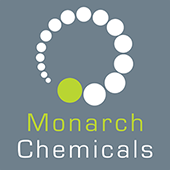Citric Acid is a weak carboxylic acid and a naturally occurring fruit acid. Citric Acid can exist both as an anhydrous or monohydrate form and will appear as white granules, crystal grains or is colourless.
Citric Acid in Food and Drink
Citric Acid has been used for hundreds of years in food processing and is, in fact, one of the most common additives you’ll find written amongst the ingredients in a majority of food and drink products, labeled under either citric acid or its E number, E330.
It occurs naturally in mainly citrus fruits, predominantly lemons and limes, which contain up to 4g per 100g of fruit but it is also is found in a wide selection of other fruits and vegetables including berries and tomatoes in varying amounts.
After its discovery by the 8th century Islamic alchemist, Jabir Ibn Hayyan, citric acid was first isolated by the Swedish chemist, Carl Wilhelm Scheele in 1784, where he crystalised it from lemon juice. It then took until 1890 before citric acid was produced on an industrial scale.
Juice from the Italian citrus industry would be treated with calcium hydroxide in order to generate calcium citrate. This would then be isolated and converted back to acid using a diluted sulphuric acid solution. Other methods of citric acid production include a fermentation process using strains of Aspergillus niger, which are fed on a sucrose or glucose solution to produce citric acid from the sugar.
Within the food and drink industry, citric acid plays a significant part in a majority of processed food and drinks, as it possesses a huge versatility when it comes to its applications.
Flavouring
Citric acid plays a huge role in enhancing flavours, particularly in the drinks industry, as it provides a sour, and refreshing flavor which offsets the sweetness of many drinks. Many modern chefs also swear by it, as it enables them to fine tune their dishes and balance off any unwanted naturally occurring sweetness.
Preservatives
The acidity of citric acid makes it an excellent food and drink preservative. The presence of acid in an environment inhibits the growth of bacteria; so many long life products contain it. These include preserves, canned goods, meats, savory snacks and sweets. Citric acid can also be used to prevent fresh fruit and vegetables from oxidizing and turning brown, which is great for chefs when preparing and presenting fresh dishes.
Stabaliser
Citric acid is used throughout the dairy industry, in particular, within cheese production and processing. The acid helps to create the perfect environment for stabilisation of emulsions. Including preventing fats from separating. It can also be used to adjust the pH of both beer and wine solutions during manufacture.
Antioxidant
The use of citric acid in processed frozen foods and as an additive in some fats and oils enhances the action of antioxidants, which effectively reduces the deterioration rate of these products. Keeping food fresher for longer and reducing waste.
Along with the food and drink sector, many other industries use citric acid as a core ingredient within their production, whether this is as an acidulent in cosmetics and pharmaceutical or a main ingredient in bathroom descalers, this versatile acid is an industrial staple.
Monarch Chemicals supply both anhydrous and monohydrate in solid forms and can produce up to a 50% solution by mixing with hot water. For more information on this product or to discuss your citric acid requirements with us, please click here.





